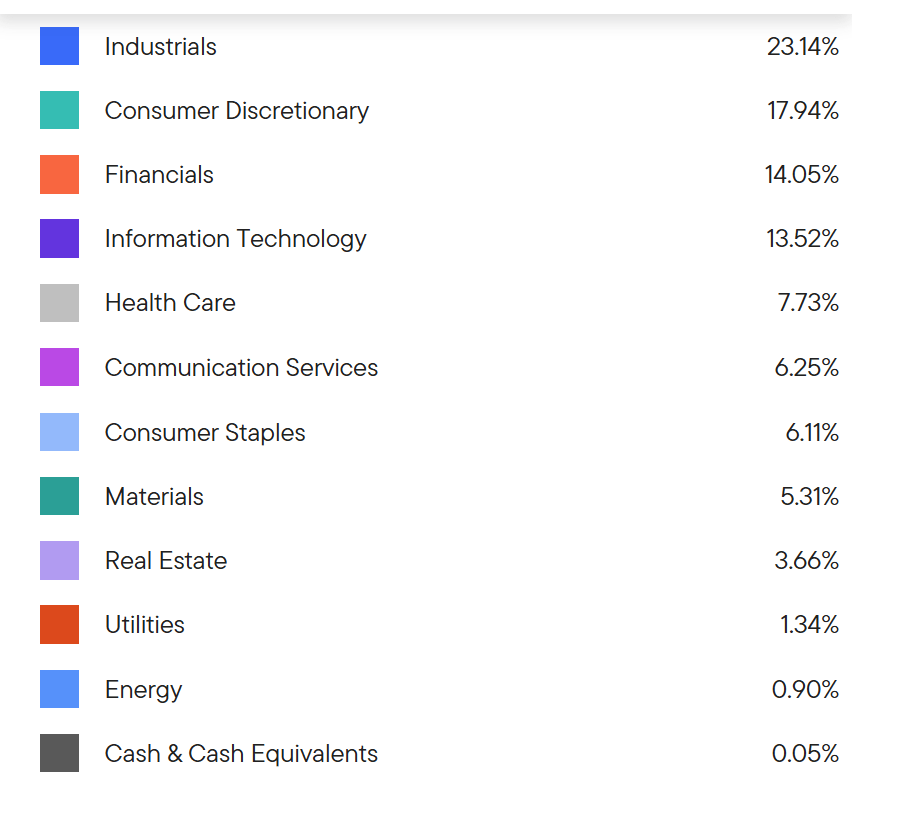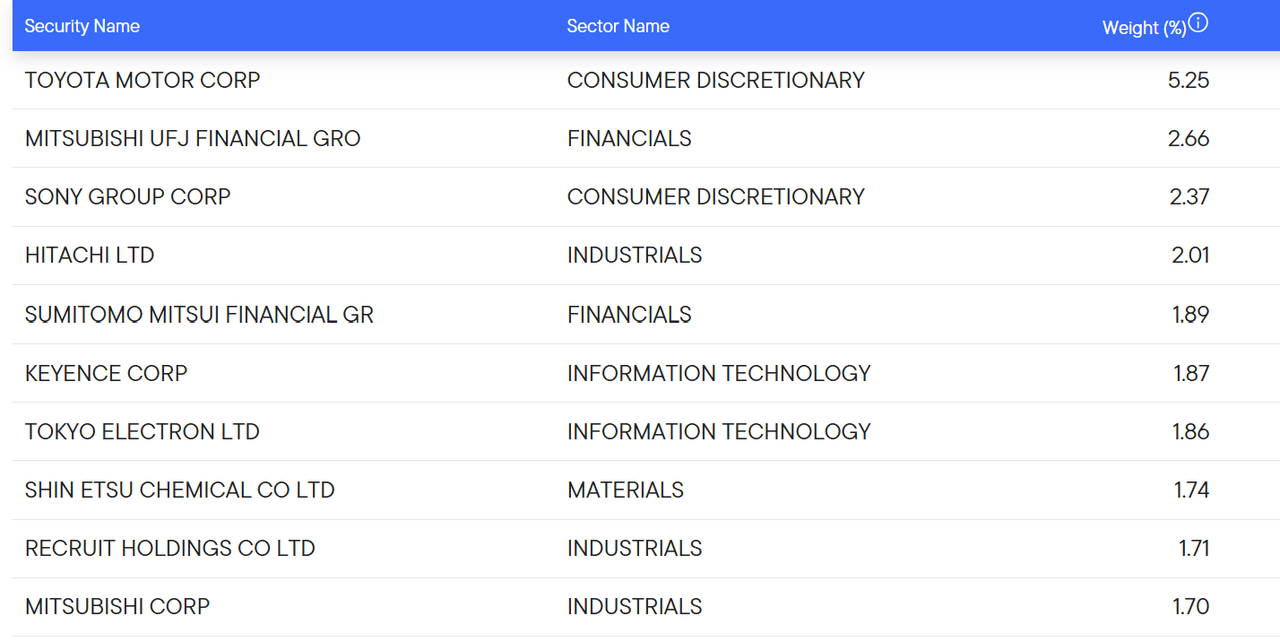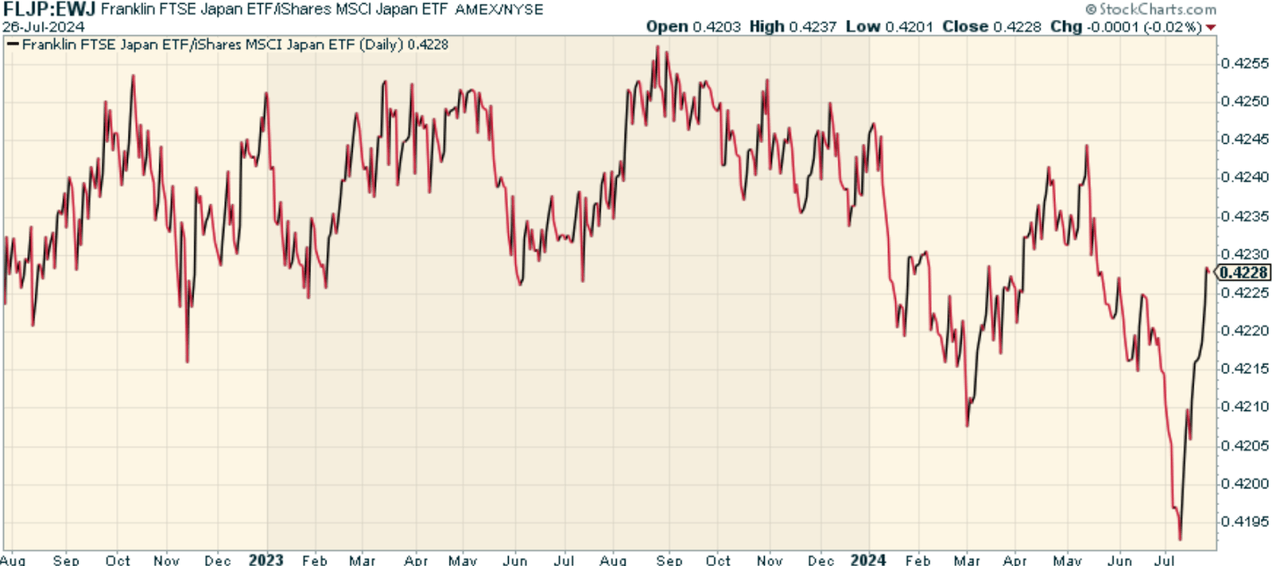Taiyou Nomachi/DigitalVision via Getty Images
Japan’s markets have largely been on fire, and that largely has been because of Yen weakness. I’ve written extensively about Japan and the risks the reversal of the carry trade could bring to global markets in the near-term. Having said that, I do think there are some strong arguments to be made for owning Japan longer-term given corporate reform over the years which has made their markets more competitive and efficient. If you want to get access to Japan’s markets and like the long-term story, then you may want to consider the Franklin FTSE Japan ETF (NYSEARCA:FLJP).
FLJP is a passive exchange-traded fund, or ETF, structured to mirror the performance of the FTSE Japan RIC Capped Index. This market capitalization-weighted composite index is designed to provide broad exposure to the performance of large and mid-cap Japanese equities. By tracking a basket that accurately reflects the country’s industrial might and economic strength, FLJP allows investors to tap into the full diversity of Japan’s equity market.
A Look At The Holdings
Japan may be a relatively small country, but it packs one helluva punch economically. When we look at the holdings, we see that no position makes up more than 5.25% of the fund, and that these companies are significant players on the global front.
What do these companies do? Toyota Motor Corporation is one of the largest automobile manufacturers in the world. Mitsubishi UFJ Financial Group is Japan’s biggest financial services conglomerate and one of the world’s biggest banking institutions, offering a broad range of financial products and services online and beyond. Sony Group is a household name in the consumer electronics industry. Hitachi Ltd is a Japanese multinational conglomerate corporation that operates a broad range of high-technology products and services, like information technology, artificial intelligence, infrastructure systems and industrial solutions all over the world. And Sumitomo Mitsui Financial Group is a big Japanese banking and financial services firm that is active across the globe and offers financial services (including commercial banking, leasing, securities and consumer finance) to its clients.
Sector Composition
From a sector perspective, Industrials make up the largest allocation, followed by Consumer Discretionary and Financials.
franklintempleton.com
Japan has deep roots in manufacturing, with companies that range from car manufacturers to precision machinery, proving that Japan remains a country of quality and reliability. The Consumer Discretionary allocation gets to be interesting to think through. To the extent that Japan faces stagflation, whereby the Japanese consumer is eroding savings relative to stagnant wages, it does seem possible this part of the fund could languish meaningfully in the months ahead should the Bank of Japan make a policy error.
Peer Comparison
There are plenty of funds that track Japan’s markets. One worth considering comparing against it is the iShares MSCI Japan ETF (EWJ). This fund is also designed to provide easy access to Japan in a single trade. The holdings and sector allocations are quite similar as well. When we look at the price ratio of FLJP to EWJ, we find that over the past two years the funds have largely tracked each other. No clear advantage in choosing one over the other in my opinion.
Pros and Cons
The good news is that the FLJP does offer several important benefits. First, it provides investors with low-cost and broad exposure to the Japanese equity index, an essential part of a globally diversified portfolio. It does so by basically tracking an entire market: the FTSE Japan RIC Capped Index was picked to ensure a broad representation of Japanese economic powerhouses.
The big risk here in my opinion is that the fund is not currency hedged. So much of Japan’s market momentum is being driven by the weaker Yen. So what happens if the Yen strengthens meaningfully, as it has the last few weeks? I would be quite nervous about selecting any currency unhedged Japan ETF at this point in the cycle. But maybe I’m wrong in that concern.
Conclusion
For those who want exposure to Japan at a low cost, FLJP’s combination of indexing, geographic, and sector diversification, along with a strong history of performance, represents your cheap ticket to Japan’s financial juggernaut. Just be mindful that Japan’s economic situation is complex, and if the Yen does go through a dislocation, this fund can go through a lot of pain until it’s over.
 Get 50% Off The Lead-Lag Report
Get 50% Off The Lead-Lag Report
Are you tired of being a passive investor and ready to take control of your financial future? Introducing The Lead-Lag Report, an award-winning research tool designed to give you a competitive edge.
The Lead-Lag Report is your daily source for identifying risk triggers, uncovering high yield ideas, and gaining valuable macro observations. Stay ahead of the game with crucial insights into leaders, laggards, and everything in between.
Go from risk-on to risk-off with ease and confidence. Get 50% off for a limited time by visiting https://seekingalpha.com/affiliate_link/leadlag50percentoff.



